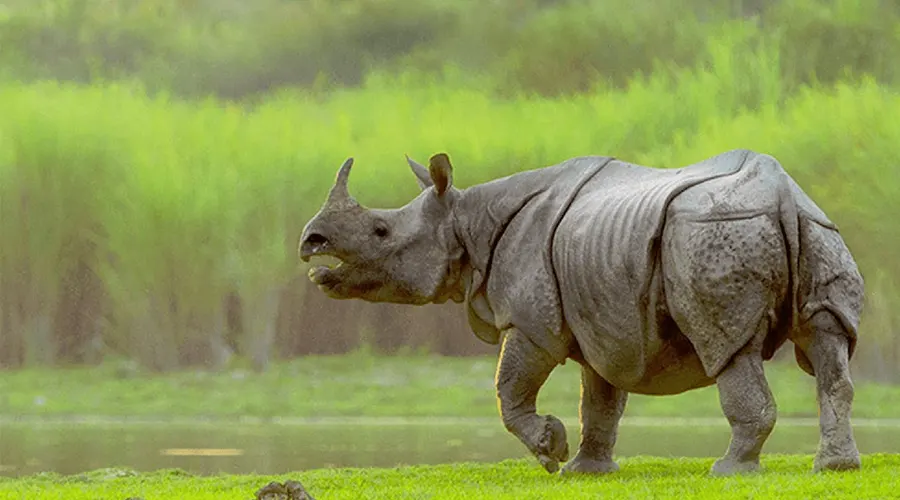Kaziranga National Park - A Home to One Horned Rhinoceros
Kaziranga National Park is solitary among the foremost national parks on the earth and also famous as the pleasure of North East India. Located within an intense geographical place, the park presents a vast vary of natural beauty. Kaziranga national park is located fairly in the Golaghat and Nagaon regions of Assam in India. It is also placed beside the Brahmaputra River on the North and the Karbi Anglong mounts on South India. Edged by fertile tea bushes, Kaziranga National Park offers a splendid scenic sight.
Kaziranga National Park is one of the last areas in eastern India undisturbed by a human presence. It is a mixture of natural world views such as Rhino, elephants, wild water buffalo, and swamp deer with Important Bird Area by Birdlife International for conservation of avifaunal species".
Kaziranga National Park a world heritage site is famous for the Great Indian one-horned rhinoceros, the landscape of Kaziranga is of sheer forest, tall elephant grass, rugged reeds, marshes & shallow pools. It’s been declared a National Park in 1974.
The actual attraction of Kaziranga National Park is its broad diversity of wildlife beauty. The chief riches trove of Kaziranga is the vast One Horned Rhinoceros, but it is also house to other species of flora and fauna for instance elephants, wild Asiatic water buffaloes, swamp deer, hog deer, gaur, sambar, Indian Muntjac, and many more. After it, Kaziranga with Tiger Reserve is also attracting Ganges Dolphin. Kaziranga National Park is also familiar as a significant bird watching point by Birdlife.
The Park is open from November to April. Tourists can take rides on elephants to move around the park or cruise in a boat on the Brahmaputra along the park.
We bring you some interesting facts about Kaziranga National Park through our blog:
- One of the fascinating facts regarding Kaziranga National Park is that it's inhabited by 2 of the biggest snakes in the world, the Reticulated Python and Rock Python as well as the longest venomous snake in the world, King Cobra.
- Kaziranga is one of the few places within the world, besides Africa, that is home to multiple species of large cats, like leopards and Royal Bengal Tigers.
- Another fascinating reality regarding Kaziranga is that it's home to the world’s largest population of the Great Indian One-horned Rhinoceros, Wild Asiatic Water Buffalo, and Eastern Swamp Deer.
- According to the latest rhino census, the rhino population in Kaziranga is 2,413.
- Kaziranga National Park additionally boasts the very best density of tigers within the world.
- Although its name is related to many legends, historians believe that it gets its name from the Karbi word, Kajir-a-rang, which implies, “the village of Kajir”. Kajir may be a common name for a girl child, and it's widely believed that a woman by an identical name dominated this space.
- Perhaps you didn’t know that it is the British who should be credited with the creation of Kaziranga National Park. It was in 1904 when Mary Curzon, wife of Lord Curzon, persuaded him to take immediate and effective steps to protect the rhinos in the region. And that is how the Kaziranga National Park came into being on 1st June 1905.
- The wildlife in Kaziranga is just one of its kind where you can find the Eastern Swamp Deer, additionally called Barasingha, that grows up to six feet tall, and can be identified by their yellow hair and distinctive white spots above their spine.
- The grasslands in Kaziranga National Park have a strong resemblance to the famous African grasslands. The common tall grasses are sugarcanes, spear grass, elephant grass, and common reed.
- A wonderful reality regarding Kaziranga is that it's been known as a crucial Bird Area by Birdlife International, and is home to a spread of migratory birds.
- Kaziranga National Park was once home to seven species of vultures, out of which, only four have survived. These are Indian Vulture, Slender-billed vulture, and Indian White-rumped Vulture.


Comments (0)